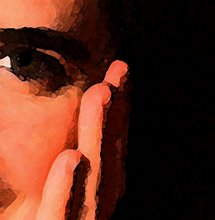In yoga we practice inversions, postures where our bodies move into upside down positions. Inversions include headstands, handstands and shoulder stands, the common theme being that the head is below the heart.
The point of standing on our heads is to invert our view of the world and, with that, to get a handle on how the way we normally view things might not be the most effective or productive. Being upside down does give you an entirely different perspective and headstands in particular leave me with a biochemical high that allows me to view the world through slightly rosier lenses.
But the practice of yoga itself is an inversion, a turning upside down of many of our assumptions about how life works and how to experience fulfillment. On Saturday morning, in an intensely heated studio, our teacher urged us to tune into our bodies and our breath, allowing what we discover inside to inspire us to action in the world, rather than having our behavior be motivated by external stimuli or expectations, as mine as been for much of my life. Another inversion is the idea that if you relax into pain or difficulty, rather than resisting, it will cease to be painful or difficult. "Pain" is the label that our mind gives to strong sensations, and once we identify something as "pain", rather than curiously exploring what the sensation actually feels like (is it a dull thudding? sharp tingles? a burning feeling?), we are likely to intensify that sensation, rather than ease it. Ditto for strong sensations caused by difficult emotions; do we repress our fear and anger or do we go into it, and see what is really going on? Easier said than done, but worth attempting all the same.
This particular instructor, a dark haired man in his 30s, has a strong regional Boston accent and occasionally mixes up words, but he is one of the more inspirational and passionate teachers I've encountered. He is not there to strike a pose, wow us with medically accurate descriptions of our anatomical workings, or lecture about the eight limbs of yogic philosophy while strutting his yoga butt. He's a very real person, with real problems, and he brings all of himself to the class, exhorting us to do the same. It is refreshing to have an instructor like him in the exceedingly cerebral Boston area, where intellectualism and accuracy rule.
Had I taken this person's class six years ago, I probably would have dismissed much of what he had to say because he's a regular guy wearing baggy shorts and a crucifix around his neck, not an impeccably attired and well spoken expert. I'm glad to observe that, since beginning my practice six years ago, my attitudes have inverted enough to allow me to not only appreciate people like him, but to seek them out.
Monday, July 16, 2007
Subscribe to:
Post Comments (Atom)




No comments:
Post a Comment